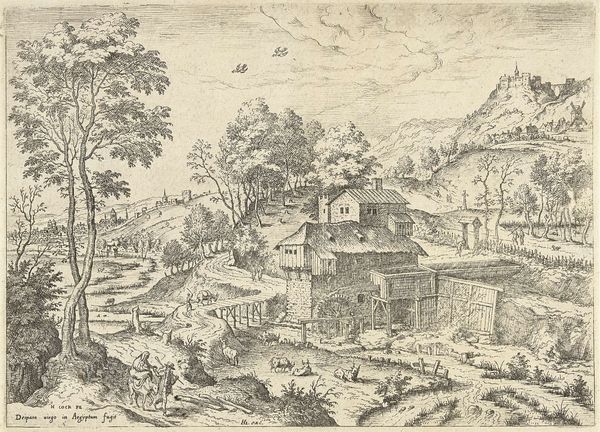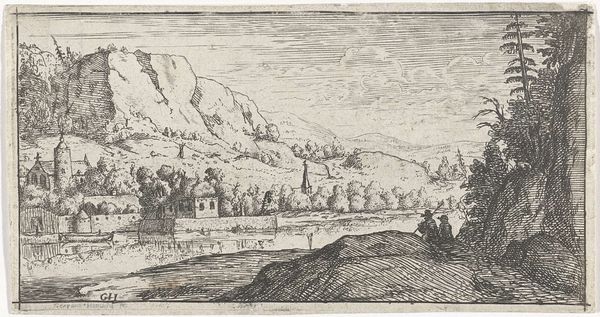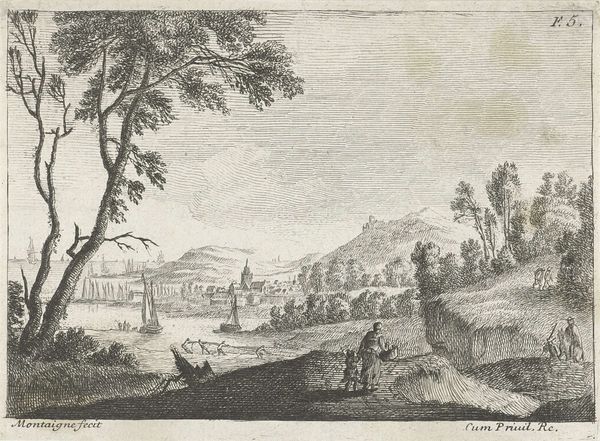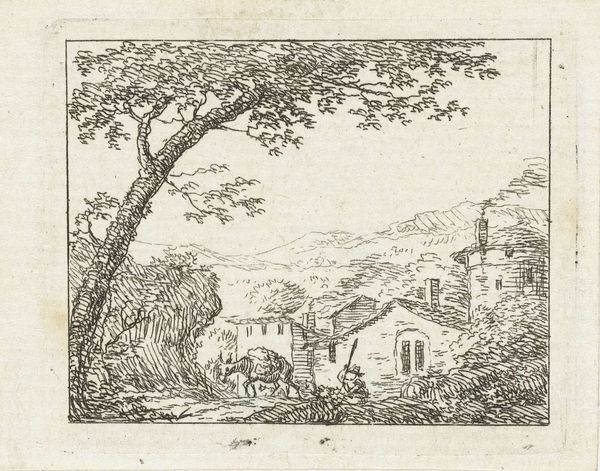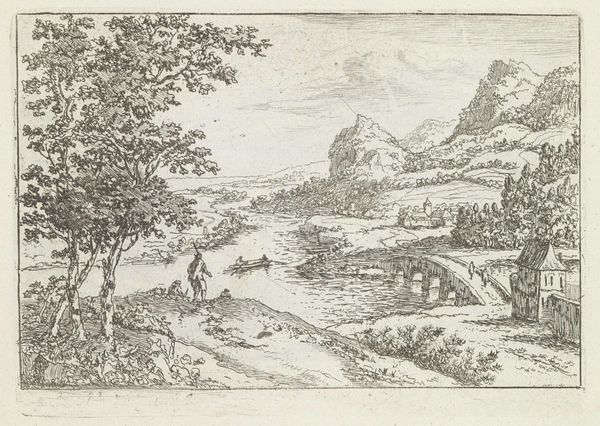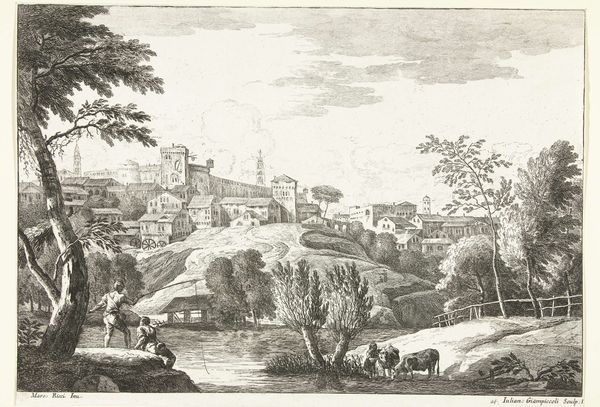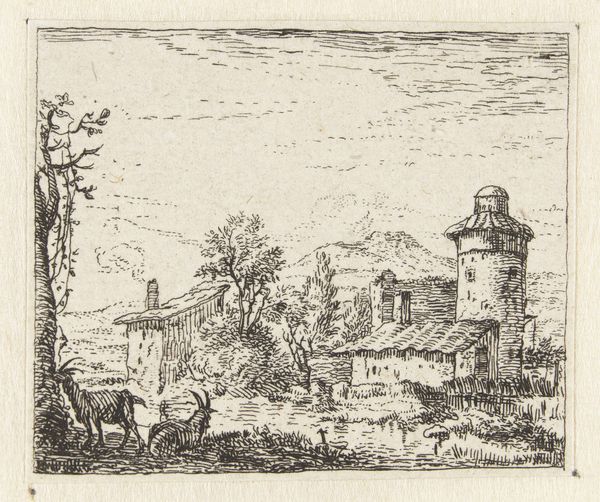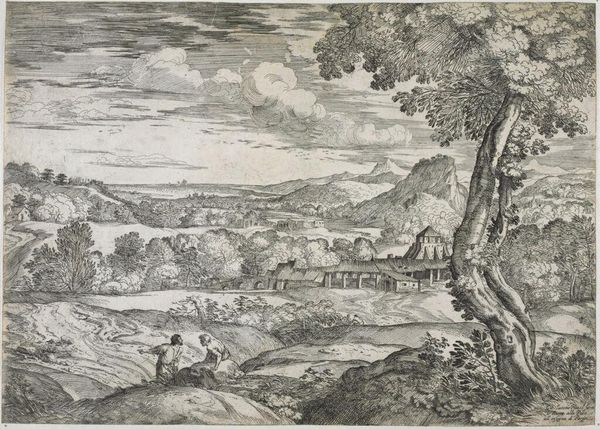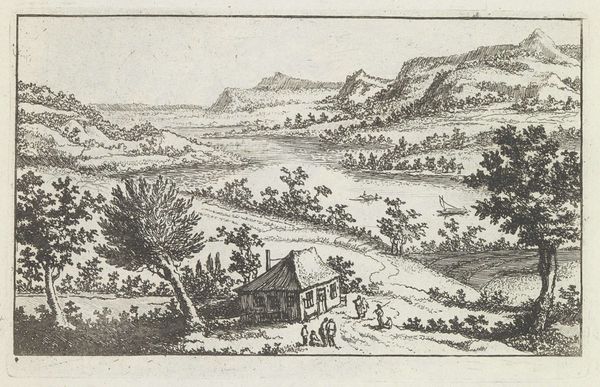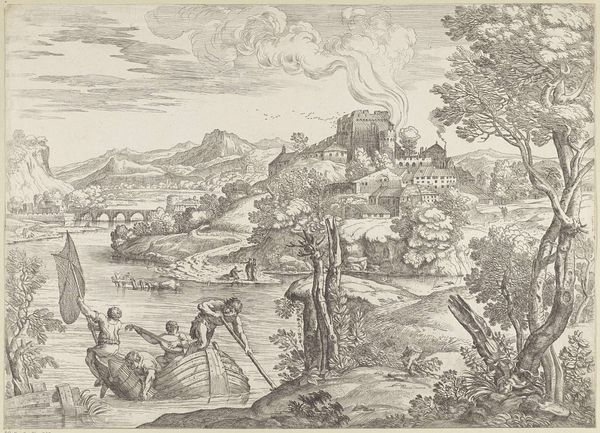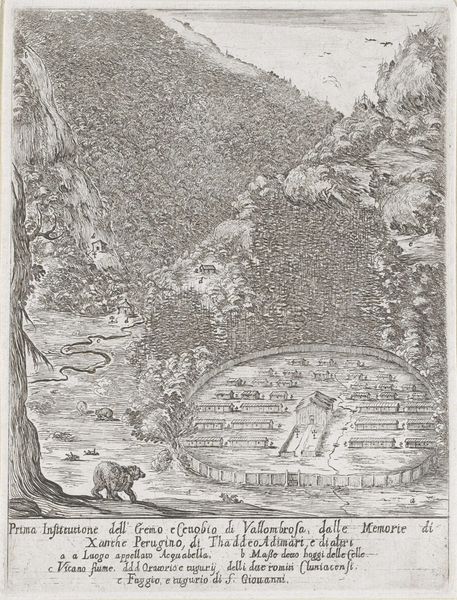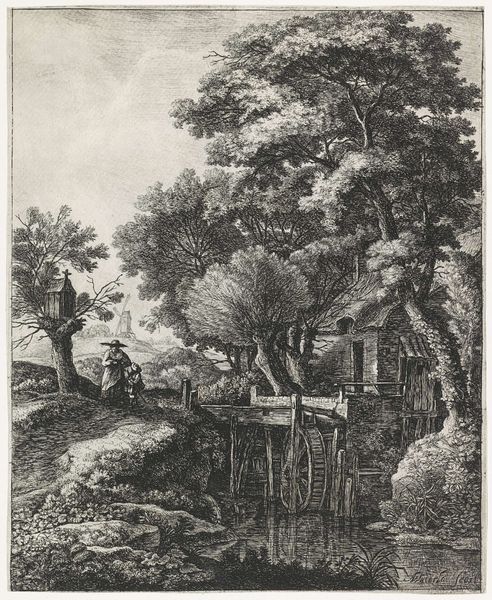
drawing, ink, engraving
#
pen and ink
#
drawing
#
narrative-art
#
pen drawing
#
pen illustration
#
pen sketch
#
landscape
#
ink
#
history-painting
#
northern-renaissance
#
engraving
Dimensions: height 218 mm, width 154 mm
Copyright: Rijks Museum: Open Domain
Hieronymus Cock produced this print, "Flight into Egypt", using etching in the mid-16th century. The image depicts Mary, Joseph, and the infant Jesus escaping to Egypt, a well known biblical episode. However, rather than a distant, exotic land, the landscape in which the Holy Family finds itself looks distinctly like 16th-century Flanders. We can see a watermill, a type of technology common to the area at this time, and a castle on a hill, a feature of the local geography. How might we interpret this displacement? Was this an attempt to make a religious story more accessible? By making the scene distinctly Flemish, Cock invites viewers to see their own world reflected in the narrative, blurring the lines between the biblical past and the present. To better understand Cock's intentions, one could look at how other artists from the region and time addressed religious themes. Remember, art historical interpretation hinges on understanding the context in which a work was produced.
Comments
No comments
Be the first to comment and join the conversation on the ultimate creative platform.
